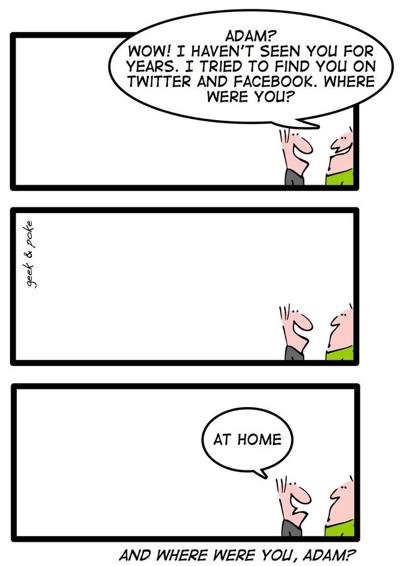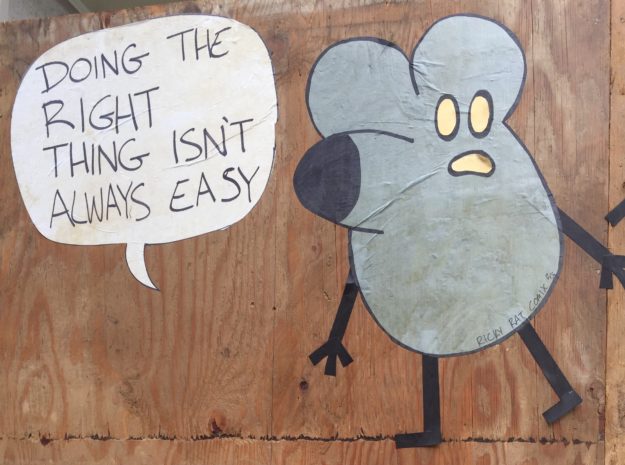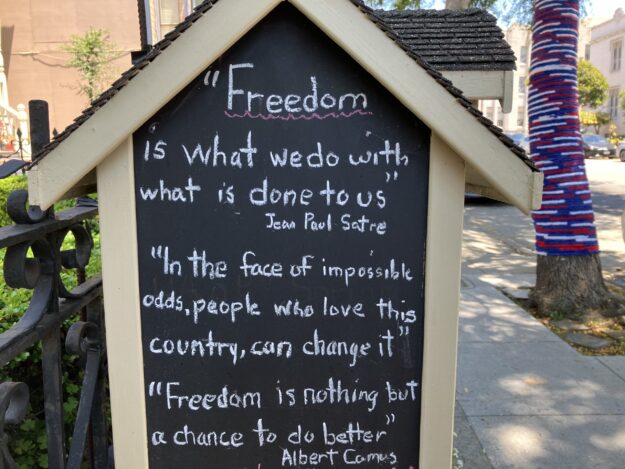 These are the best of times. These are the worst of times.
These are the best of times. These are the worst of times.
However you see the present, rest assured others see it the opposite.
How do you cope? How do you help others cope? How are you adapting, personally and professionally, to the times in which we live?
It turns out the way you cope, particularly during times of stress, has a lot to do with your unique personality traits.
During such times, it pays to be self-aware. It can help you understand why you may be feeling particularly panicky. Or inexplicably calm and at peace. ANd it can help you lean in to what makes you feel creative, purposeful, and even joyful.
Through self discovery, you can live your life in the best way possible.
Want to make a contribution that feels authentic, productive and true to you? Want to make this a year where you help others do the same, be they your family, friends, co-workers, program participants and beneficiaries, volunteers or donors?
Then how about taking a bit of focused time to unearth some important truths about the most interesting person on earth — YOU!
Now is a terrific time for some good old-fashioned introspection.
Turn off the news, stop scrolling through social media, and instead get in touch with, and appreciate, what you bring to the table.
How to Learn About the Most Interesting Person on Earth
I’ve got four fun things for you to try!
One is a values exercise. The others can be grouped under the mantle of “personality tests.”
First, let’s stipulate values vary and they’re all legitimate. Also, there’s no ‘right’ or ‘wrong’ personality. These exercises and assessments I’m sharing today are my favorites for the workplace (and beyond) as they’ve been rigorously tested, are grounded in research and have been shown to be fair and consistent across populations. Plus, they’re fun to take.
Are you game?
Even if you don’t love doing exercises and taking quizzes as much as I do, you may find one or more of these interesting. None of them take a lot of your time. And it’s even more fun if you do it together (with friends, family, co-workers); then compare and discuss results!
Remember: Everyone brings their own gifts to the situation at hand.




 Assuming people don’t want to be asked to make a philanthropic gift is one of the biggest misconceptions of what constitutes being donor-centered.
Assuming people don’t want to be asked to make a philanthropic gift is one of the biggest misconceptions of what constitutes being donor-centered.







 Legacy gifts don’t fall from the sky.
Legacy gifts don’t fall from the sky.






 Everyone’s been saying this, just about daily, for some time.
Everyone’s been saying this, just about daily, for some time.
 These are the best of times. These are the worst of times.
These are the best of times. These are the worst of times.










 It’s back-to-school and prime fundraising season.
It’s back-to-school and prime fundraising season.
 In
In 
 You’ve got one month before fall fundraising season begins in earnest.
You’ve got one month before fall fundraising season begins in earnest.
 What must you keep top of mind to have meaningful conversations with donors who (you hope!) may contemplate a gift to your organization?
What must you keep top of mind to have meaningful conversations with donors who (you hope!) may contemplate a gift to your organization?




 Once upon a time I let folks know I’d “finagled” a discount for them. After one reader told me the word “finagle” means “to obtain something by devious or dishonest means,” I sent an apologetic “Ruh Roh” email. I received a lot of forgiving (thank you!) feedback. Many kindly supported my initial use of the word “finagle.”
Once upon a time I let folks know I’d “finagled” a discount for them. After one reader told me the word “finagle” means “to obtain something by devious or dishonest means,” I sent an apologetic “Ruh Roh” email. I received a lot of forgiving (thank you!) feedback. Many kindly supported my initial use of the word “finagle.”

 Giving is an emotional experience. It deserves an emotional response.
Giving is an emotional experience. It deserves an emotional response.



 I find a widespread misunderstanding about the notion of what constitutes being donor-centered. It derives from two misconceptions:
I find a widespread misunderstanding about the notion of what constitutes being donor-centered. It derives from two misconceptions:
 Ever have a well-meaning, yet perhaps overly controlling or risk-aversive, boss say to you:
Ever have a well-meaning, yet perhaps overly controlling or risk-aversive, boss say to you:





 When organizations aren’t raising as much money as they need, they’ll often tell me: “We need to recruit new board members.” This is very often true, but it’s only a piece of the puzzle as to why they’re not being more successful with fundraising.
When organizations aren’t raising as much money as they need, they’ll often tell me: “We need to recruit new board members.” This is very often true, but it’s only a piece of the puzzle as to why they’re not being more successful with fundraising.
